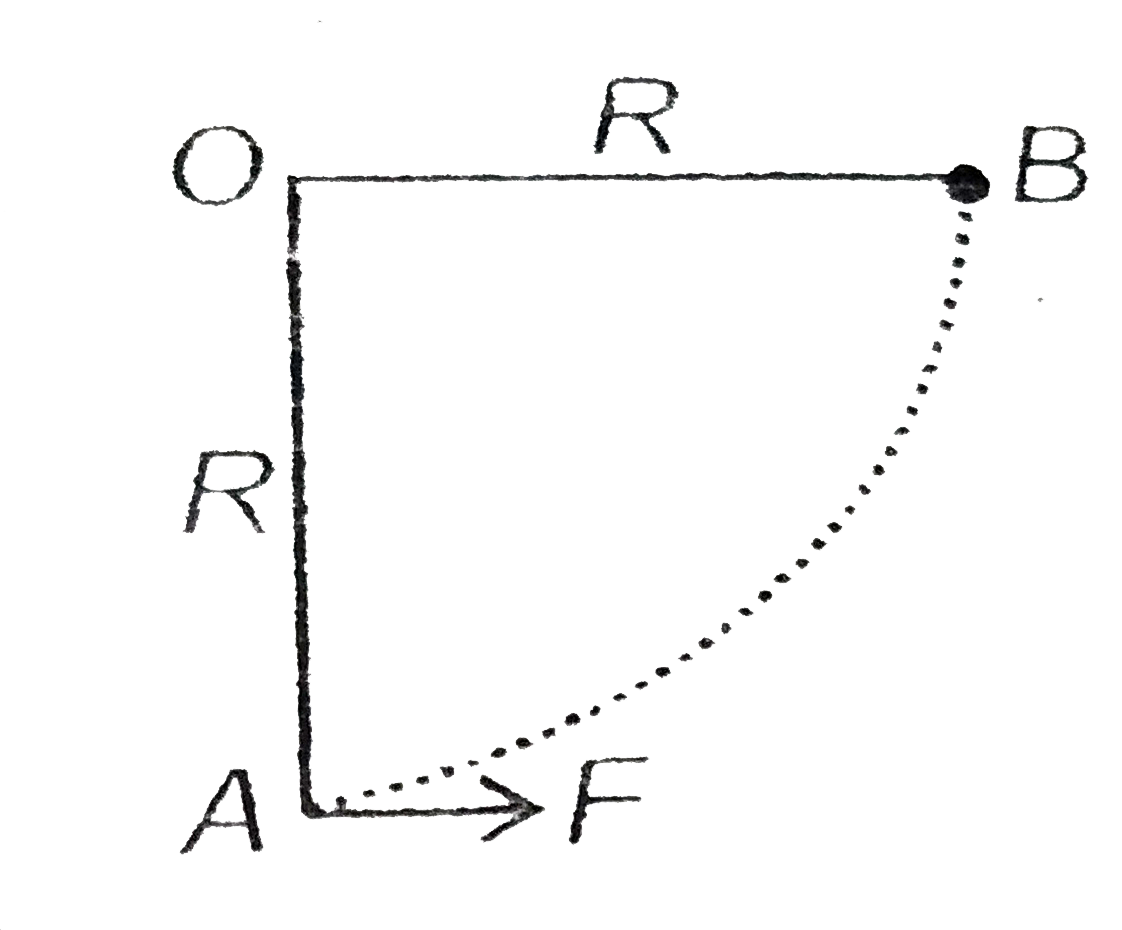A force F is applied on a block of mass M. The block is displaced through a distance d in the direction of the force. What is the work done by the force on the block? Does the internal energy change because of this work?
To solve the problem step by step, we will first determine the work done by the force on the block and then analyze whether the internal energy changes due to this work.
Step 1: Understanding Work Done
The work done W by a force F when it displaces an object through a distance d in the direction of the force can be calculated using the formula:
W=F⋅d⋅cos(θ)
where θ is the angle between the force and the direction of displacement.
Step 2: Identifying the Angle
In this case, the block is displaced in the direction of the applied force. Therefore, the angle θ is 0∘.
Step 3: Calculating the Cosine of the Angle
Since cos(0∘)=1, we can simplify the work done equation:
W=F⋅d⋅cos(0∘)=F⋅d⋅1=Fd
Step 4: Conclusion for Work Done
Thus, the work done by the force on the block is:
W=Fd
Step 5: Analyzing Internal Energy Change
Now, we need to determine if the internal energy of the block changes due to this work. Internal energy is the energy associated with the microscopic components of a system, such as the kinetic energy of particles and potential energy due to their positions.
Step 6: Understanding Internal Energy
The work done W on the block results in the block moving as a whole, which means it gains kinetic energy. However, this work does not affect the internal energy of the block because internal energy does not include the energy due to the motion or location of the system as a whole.
Step 7: Conclusion on Internal Energy
Therefore, the internal energy of the block does not change due to the work done by the force:
Internal Energy Change=0
Final Answers
1. The work done by the force on the block is W=Fd.
2. The internal energy does not change due to this work.
---
The work done W by a force F when it displaces an object through a distance d in the direction of the force can be calculated using the formula:
W=F⋅d⋅cos(θ)
where θ is the angle between the force and the direction of displacement.
In this case, the block is displaced in the direction of the applied force. Therefore, the angle θ is 0∘.
Since cos(0∘)=1, we can simplify the work done equation:
W=F⋅d⋅cos(0∘)=F⋅d⋅1=Fd
Thus, the work done by the force on the block is:
W=Fd
Now, we need to determine if the internal energy of the block changes due to this work. Internal energy is the energy associated with the microscopic components of a system, such as the kinetic energy of particles and potential energy due to their positions.
The work done W on the block results in the block moving as a whole, which means it gains kinetic energy. However, this work does not affect the internal energy of the block because internal energy does not include the energy due to the motion or location of the system as a whole.
Therefore, the internal energy of the block does not change due to the work done by the force:
Internal Energy Change=0
1. The work done by the force on the block is W=Fd.
2. The internal energy does not change due to this work.
Topper's Solved these Questions
Similar Questions
A body, acted upon by a force of 50N, is displaced through a distance 10m in direction making an angle of 60∘ with the force. Find the work done by the force.
View SolutionHow much force is applied on the body when 780 J of work is done in displacing the body through a distance of 30 m in the direction of force?
View Solution
Knowledge Check
the work done by applied force is
A10 JB50 JC100 JD150 J
A block is pushed through 2m across is surface offering 25 N resistance. The work done by the resisting force
View SolutionA cord is used to lower vertically a block of mass M, a distance d at a constant downward acceleration of g4, then the work done by the cord on the block is
View SolutionA block of mass m is taken from A to B under the action of a constant force F. Work done by this force is

View SolutionFind out the work done when a force of 30 N displaces a body through 8 m in the direction of the applied force.
View SolutionA block of mass Mis pulled vertically upward through a rope of mass m by applying force F on one end of the rope. What force does the rope exert on the block?
View SolutionA block A, weighing 100 N is pulled up a slope of length 5 m by means of a constant force F (= 100 N) as illustrated in Fig.

(a) What is the work done by the force F in moving the block A 5 m along the slope ?
(b) What is the increase in potential energy of the block A?
(c) Account for the difference in the work done by the force and the increase in potential energy of the block
View SolutionThe left and of the spring tied to a wall and at the right end is attached to a block of mass m, which is placed on a frictionless ground. The force F displaces the block by distance x where it is exactly balanced by the spring force.

What is the maximum speed of the block in the ensuing motion after the force F is removed?
View Solution
